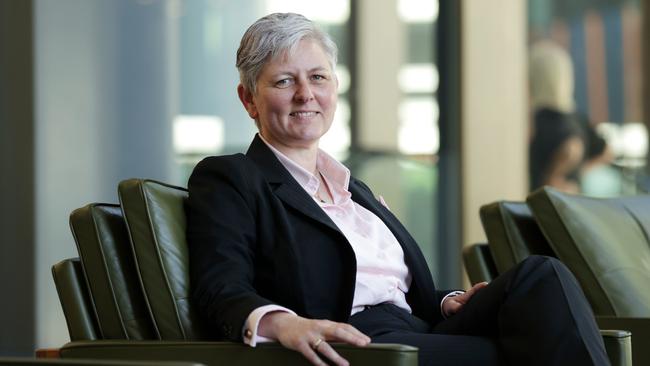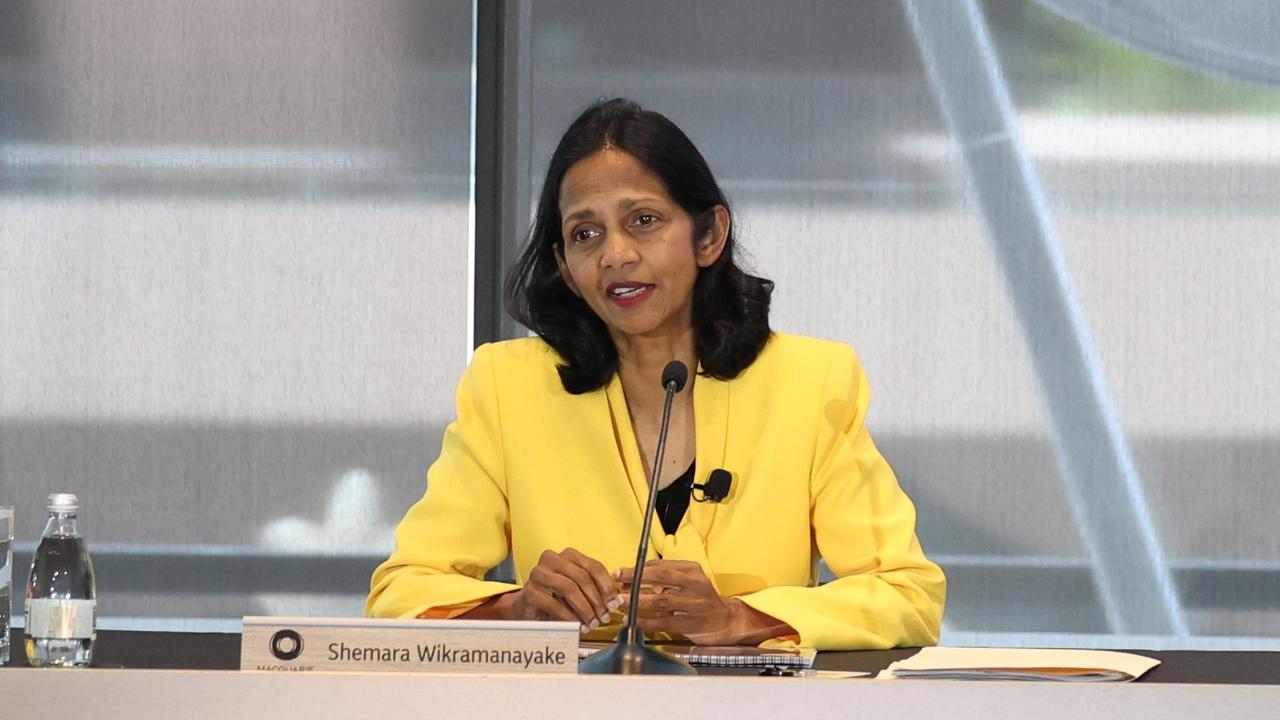Westpac sees later start to interest rate cuts after hawkish RBA minutes
Economists are increasingly predicting an even later start to rate cuts, as the RBA needs more than one ‘good’ quarterly CPI outcome to be confident a decline in inflation is sustainable.

Business
Don't miss out on the headlines from Business. Followed categories will be added to My News.
Economists increasingly expect interest rates in Australia won’t be cut until May.
Six high-profile forecasters, including NAB and Westpac, have pushed out their rate cut view from February to May after relatively hawkish RBA communications this month.
“While the post-meeting communication was still broadly in line with our earlier expectation, subsequent public appearances and the minutes now suggest that the balance of probabilities has shifted,” Westpac chief economist, Luci Ellis said.
“The recent sharp increase in consumer sentiment and ongoing resilience in the labour market will have also tilted the balance of probabilities to waiting longer.”
RBA minutes this week said the board “would need to observe more than one good quarterly inflation outcome to be confident that such a decline in inflation was sustainable”.
“This has been interpreted as saying that the RBA needs to see at least two more quarterly CPI – and more importantly, trimmed mean – outcomes from here before being confident of their forecasts,” Dr Ellis said.
“This is almost certainly how the board and staff are thinking about the outlook.
“It suggests that they will wait for longer than we previously believed.”
It follows similar moves by Citi, Capital Economics, NAB, Capital Markets and UBS in the past week.
Money market pricing has for some time implied that rates won’t be cut until May at the earliest. However, a majority of forecasters – including ANZ and CBA – still expect a first cut in February.
Despite sizeable interest rate cuts by most Western central banks including the Federal Reserve in recent months, the RBA has kept its official cash rate target at 4.35 per cent since November 2023.
In her post-meeting press conference two weeks ago, RBA governor Michele Bullock indicated that interest rates were still at least six months away.
After a recent shift in market pricing to imply no interest rate cuts until May in recent months, Ms Bullock said the market was “on message” with what the board thought about the outlook.
“I think that the market is actually reasonably on message about what we’re saying here, which is that we are not at the moment in a position where we can sustainably say inflation is going to be back in the band, and we want to be more convinced of that,” Ms Bullock said at the time.
“And I think what the market is reflecting is that they understand that point of view, and the risks are balanced. We don’t want to say we’re ruling one or the other out (cuts or hikes), because we … just want to make sure that we have got inflation continuing to come down.
“So we just need to be convinced that that’s what we’re delivering – and I think that’s exactly what the markets have factored in.”
Minutes of that meeting this week gave little hope of rate cuts before May and warned of scenarios where it may need to lift rates again – or keep them at current levels for a “prolonged period”.
“More generally, members noted that, given the already lengthy period in which inflation had been above target, the board has minimal tolerance to accommodate a more prolonged period of high inflation, even if this occurred because of factors that constrained the economy’s supply capacity,” the minutes said.
Relative to their negative assessment of the labour market outlook – whereby board members said the risks “might have diminished somewhat” – the minutes showed less confidence in RBA staff forecasts of underlying inflation coming back to the target band by 2026.
Underlying inflation – which members agreed provides a better indicator of inflation momentum – had remained high at 3.5 per cent and was “declining more slowly”.
Underlying inflation outcomes over the prior two years had “generally been higher than earlier forecasts and quarterly outcomes for underlying inflation since late 2023 had pointed to the relatively slow progress in reducing inflation,” the minutes said.
Consistent with weaker-than-expected measured labour productivity, weaker economic growth, stubbornly-high underlying inflation and a slow rise in the unemployment rate “suggested that the economy’s supply capacity was less than projected a year earlier”.
Dr Ellis – herself a former chief economist at the RBA – expects the initial rate cuts by the RBA to be “somewhat front-loaded, with consecutive cuts in late May and early July”.
“This is also a change from our previous expectation of a moderate pace of decline of one cut per quarter.”
Westpac still has a terminal rate to be 3.35 per cent being hit by the end of 2025.
In her view an earlier start in February or March was still possible, but a later start date would also be a risk if inflation didn’t fall as the RBA is currently forecasting.
“That said, the longer the RBA board waits, the faster they will need to move thereafter, as it would then be more likely that they have hesitated too long,” she said.
“Policy is restrictive, and if it were to stay where it is for an extended period, inflation would undershoot the target sooner or later.”
But Dr Ellis warned that “things can pivot quite quickly”, and that the RBA’s view of the economy “looks somewhat more hawkish than we think is warranted”.
As late as February 2022, the RBA wasn’t signalling that it expected to increase the cash rate anytime soon. At the time, then-governor Philip Lowe was reported as saying: “I think these uncertainties are not going to be resolved quickly. Another couple of CPIs would be good to see.”
“Yet it raised rates in May of that year,” Dr Ellis said. “When the facts change – it became apparent that wages growth had actually picked up at last – you have to change your mind.”
But she said the RBA’s forecasts “hang crucially” on a relatively bullish view of the potential for consumption growth to pick up as inflation declines and real incomes recover.
Another area where the RBA could end up revising its view is on the labour market.
“Employment growth has been unexpectedly robust,” Dr Ellis added.
“It is important to remember that, with labour force participation rates trending up over many decades, employment has to run very hard to avoid an increase in the unemployment rate.
“While the unemployment rate has levelled out recently, the underlying trend has been an upward drift for precisely this reason.
“If employment growth slowed even moderately, things could unravel quite quickly.”
More Coverage
Originally published as Westpac sees later start to interest rate cuts after hawkish RBA minutes





